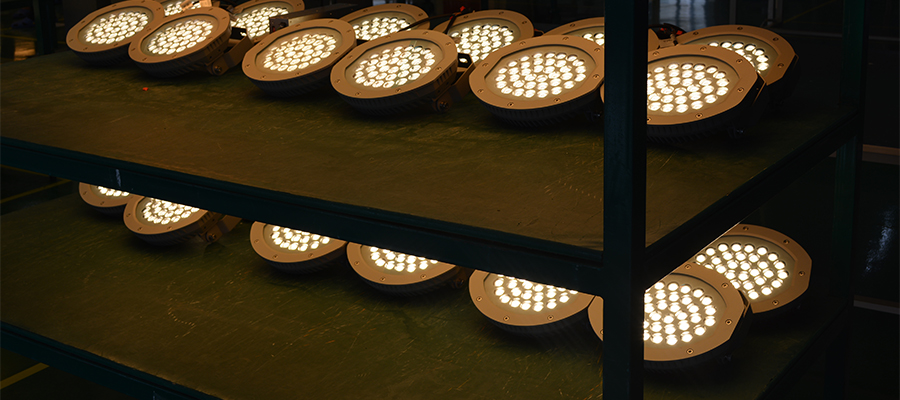Top 9 Lighting Fixtures for Brightening Streets
2021-04-15
VIEW "985
You may notice that many street lights look the same, but have you ever thought that the lamps they use are different? For example, when we watch a movie, the different color street lights inside create a different scene atmosphere to make the movie more watchable. If you want to know which lighting fixture is suitable for your street lighting project, then please read on.
Different lighting scenes use different lighting fixtures, which are mainly divided into specific lighting and general lighting. This article introduces 7 kinds of commonly used street lighting fixtures, you can choose the right products according to your specific needs.

Incandescent Light
Incandescent light was first invented by Thomas Edison in 1879 to replace the arc lamp. Their pros and cons are as below:
| Pros | Low production cost Lowest price lamp (costs $1 to $2). Can highly adapt to large voltage and current ranges; can work with DC and AC power. Color rendition is great (You can get a CRI of 100 for a 2700K color temperature. As the temperature rises, CRI is 95, which is still a good rating) |
| Cons | Efficiency rate is only 10 lumens/watt (Most energy consumption is wasted in heat generation). Short lifespan (around 1,200 hours) and high maintenance cost. |
Mercury Vapor
It is a major improvement over the old incandescent and fluorescent lamps, but most mercury street lights have been replaced by more efficient sodium lamps.
| Pros | More efficient than incandescent bulb and fluorescent bulb. |
| Cons | Hazardous emissions as it produces ultraviolet rays. It gets dimmer very quickly than other types of bulbs. It cycle at the end of its life cycle. |
High Pressure Sodium (HPS) Street Light
High-pressure sodium lamps are the most commonly used street lights in the world, which produce white light by mixing different gases, also produces yellow-orange illumination. But they have the following disadvantages:
●It takes a few moments before turning on.
● Produces reddish color at the end of its life and burns at the end of its life.
● It needs a transformer/ballast for current regulation and change the voltage.
Metal Halide Street Light
Metal halide street lights can emit real white light and have good color performance/rendering effects, most used for streetlights, parking lot lights, and stadium lights; warehouses, schools, hospitals and office buildings as well as city and high end street lighting.
The pros and cons of them are:
| Pros | Have good color rendition. Have an improved CRI around 85. |
| Cons | High brightness, which contributes to light pollution. Less efficient than sodium lamps. They explode or shatter during failure. |
Ceramic Discharge Metal Halide Lamp
It is an upgraded version of the metal halide light, which can produce clearer light and has an improved CRI (78-96). On the other hand, it can also produce better color retention. In terms of efficiency, ceramic discharge metal halide lights are far superior to tungsten filament incandescent bulbs.
Compact Fluorescent Lamps (CFL) Street Light Bulb
CFL imitates the physical characteristics of incandescent bulbs, but its internal workings are similar to fluorescent bulbs, and are more compact than traditional fluorescent bulbs.
CFL lamps are currently used in many commercial building lighting and peripheral street lighting. They produce the same amount of light as fluorescent lamps, but consume less power. Compared with incandescent bulbs, this lamp has a longer service life (10,000 hours)..
| Pros | Lasts longer than fluorescent lamps and are more efficient. Its beam spread is more controlled than fluorescent bulb. More compact. |
| Cons | The lighting intensity can lessen at half of its life cycle. CFL requires a ballast. |
Light Emitting Diode (LED) Street Lights
LED street light is an important technology for road lighting. It is very energy-efficient, has a long service life, and does not emit toxic chemicals such as mercury lamps. The perfect combination of LED lights and solar energy greatly reduces the demand for electricity.
In addition, LED lights require less maintenance and are cost-effective in the long run.
In addition to the expensive upfront cost, using LED street lights has many benefits:
● Long lifespan of up to 50,000 to 100,000 hours.
● Energy efficient with less heat emission.
● Directional light (over 180 degrees, unlike other lights with 360 degrees light direction).
● Very high quality light.
● Low maintenance costs.
Phosphor-Converted Amber (PCA) LED Street Light Bulb
PCA LED light consumes very little energy and has a good color display effect, but it is not widely used because of its high price and relatively short time on the market.
Compared to traditional LEDs, PCA LEDs are a monochromatic amber light that emits yellowish light. This makes the eyes feel comfortable, and at the same time has a higher lighting efficiency.
Narrow-Band Amber (NBA) LED Street Light Lamp
Although NBA (LED) lamps cannot emit pure white light (all seven colors of the rainbow) and blue light, it mostly emits yellow/warm yellow light. They still have a good color representation and do not make objects look gray like LPS lights.
This kind of lamp is a very new technology, it is not commonly used and the price is very expensive. But overall, they are very effective.
| Pros | Working more efficiently than incandescent bulb and fluorescent bulb. |
| Cons | Hazardous emissions as it produces ultraviolet rays. It gets dimmer very quickly than other types of bulbs. It cycle at the end of its life cycle. |

